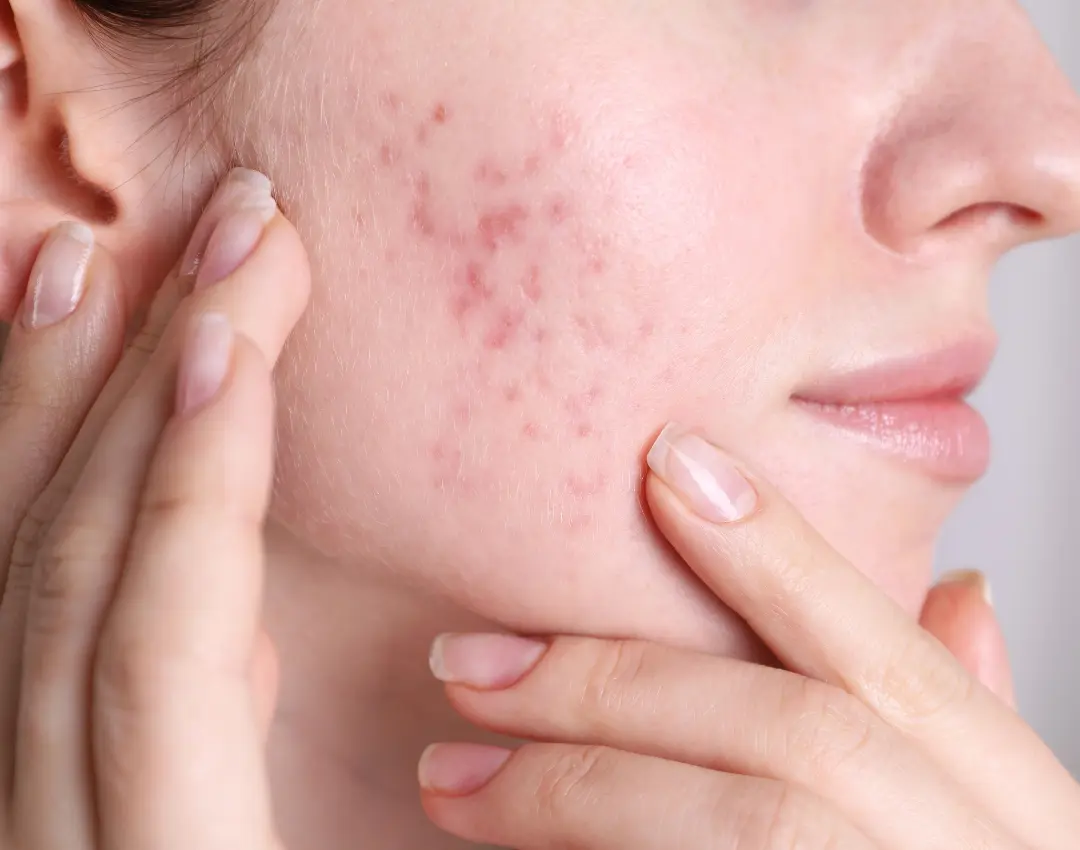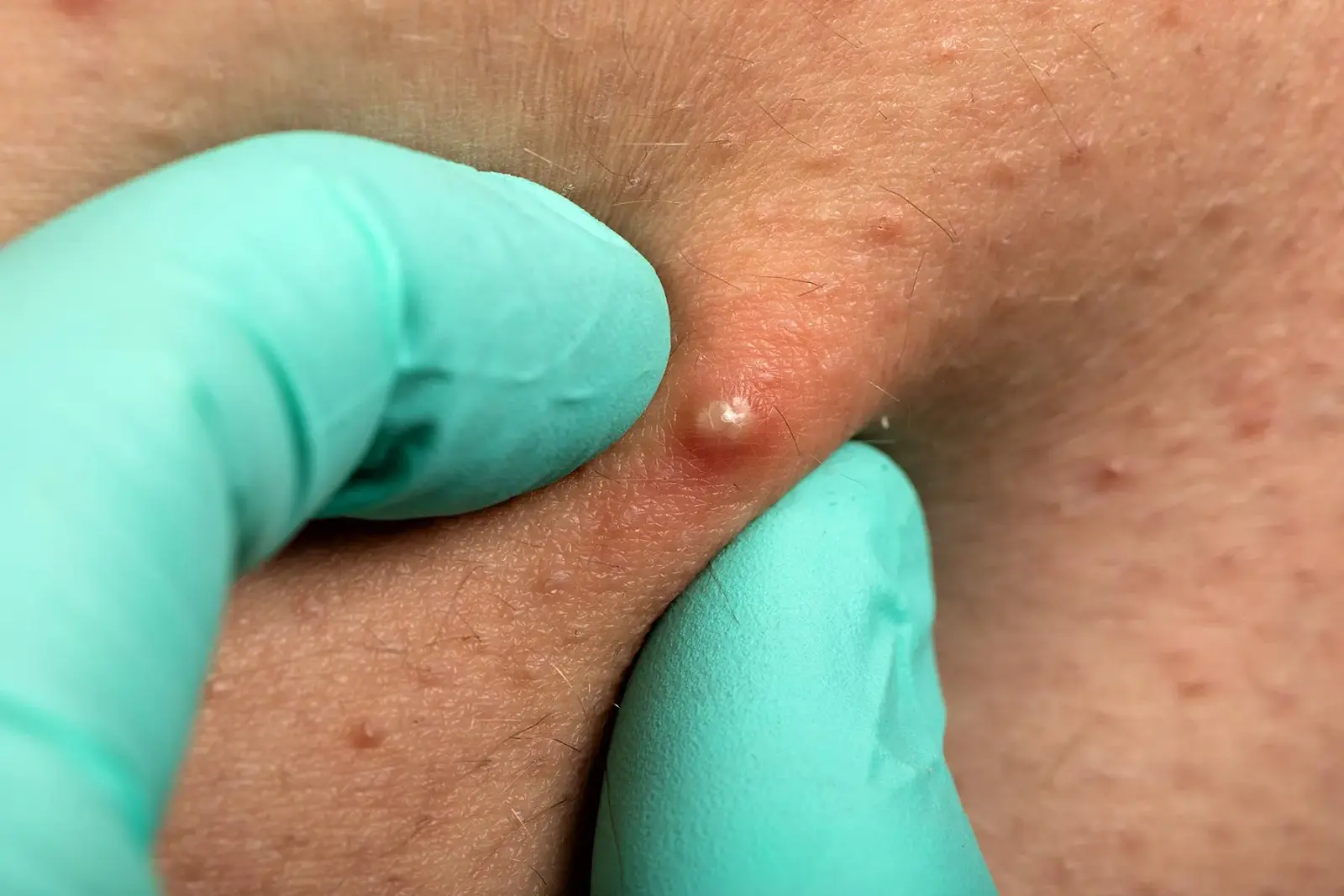Acne Mechanica Explained: Tips for Athletes and Active Individuals
Acne mechanica is a type of acne caused by friction, pressure, and heat on the skin, often exacerbated by sports equipment or tight clothing. It commonly affects athletes and active individuals.
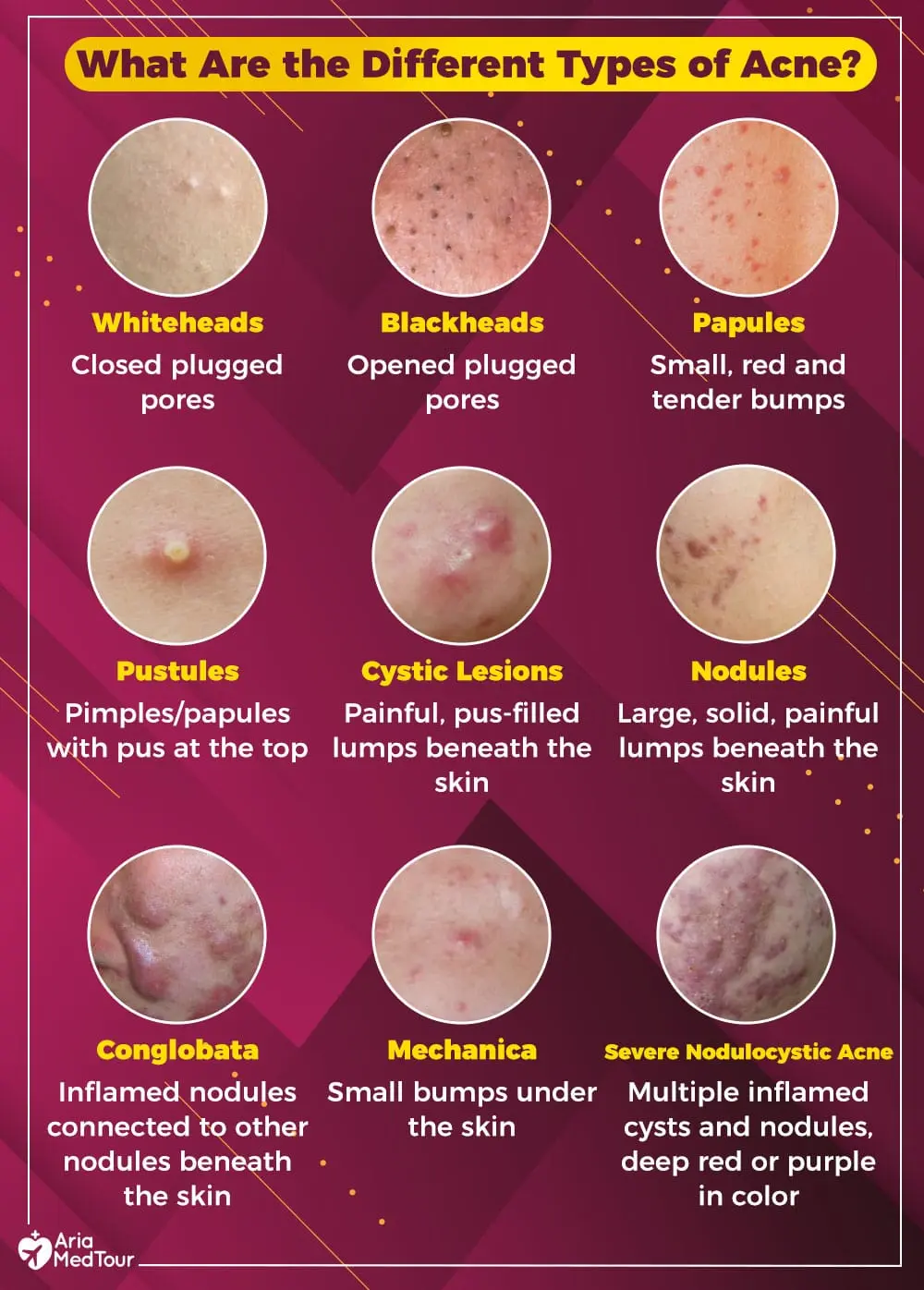
Symptoms of Acne Mechanica
Acne mechanica often develops in areas where the skin experiences repeated friction, pressure, or heat. While it might initially resemble mild acne, it has distinct characteristics. Here’s a detailed breakdown of its symptoms:
Small Red Bumps
- Tiny red or flesh-coloured bumps are the first sign of acne mechanica. These bumps appear in areas where gear, clothing, or equipment presses or rubs against the skin.
- Common areas: Chin, forehead, shoulders, back, and even the thighs, depending on the type of equipment used.
Pimples (Papules and Pustules)
- Over time, these bumps can evolve into inflamed papules (red bumps without pus) or pustules (bumps filled with pus).
- These may look similar to regular acne but are often concentrated in specific areas where heat and friction occur.
Irritated Skin or Rash
- The affected areas may feel tender or irritated due to the continuous rubbing or pressure.
- A rash-like appearance is also common, especially in people who sweat heavily during physical activities.
Clustered Breakouts
- Acne mechanica often presents as clusters of small pimples or bumps in a localized area rather than being spread across the skin.
- For example, athletes who wear helmets may notice breakouts on the chin or forehead, while those using backpacks may see them on the upper back or shoulders.
Excess Oil and Shine
- Heat and sweat from gear or clothing can increase sebum (oil) production in the affected areas, making the skin appear greasy or shiny.
- This excess oil can clog pores, leading to more breakouts.
Blackheads and Whiteheads
- In addition to inflamed pimples, you may notice the presence of non-inflamed comedones (blackheads and whiteheads) in the same area.
- These are caused by the trapping of dirt, sweat, and oil due to the pressure and friction.
Dry or Flaky Skin Around the Acne
- Prolonged irritation may lead to dryness or peeling around the affected area, especially if the skin is repeatedly exposed to friction without proper care.
Dark Spots or Post-Acne Marks
- If left untreated, acne mechanica can leave dark spots or hyperpigmentation in the areas where breakouts occur.
- This is particularly noticeable in people with darker skin tones or those prone to post-inflammatory hyperpigmentation.
Where Does Acne Mechanica Commonly Appear?
- Chin and Jawline: From helmet straps or tight face masks.
- Forehead: Due to sweatbands, helmets, or hats.
- Back and Shoulders: From backpack straps, sports bras, or tight workout clothing.
- Thighs and Waist: Caused by tight clothing like leggings or belts during workouts.
- Buttocks: Often triggered by sitting for long periods in tight, non-breathable clothing.
If you notice these symptoms, it’s essential to address them early with proper hygiene and by minimizing the causes of friction and heat on the skin. Over-the-counter treatments and preventive measures can also help manage acne mechanica effectively.
Causes of Acne Mechanica
Acne mechanica isn’t your typical breakout—it’s triggered by external factors like friction, pressure, heat, and sweat. These elements combine to irritate the skin, clog pores, and set the stage for breakouts. Let’s take a closer look at what causes this type of acne:
Friction and Pressure
Ever notice breakouts under your helmet strap or backpack? That’s friction at play! Repeated contact between your skin and sports gear, clothing, or accessories creates irritation and inflammation. When the skin is constantly rubbed or pressed, it weakens the skin barrier, making it more susceptible to clogged pores and acne.

Heat and Sweat
Sweat is a double-edged sword. While it helps cool the body, it can also clog pores when trapped under tight clothing or gear. Add heat into the mix, and you’ve got the perfect environment for acne to thrive. Warm, sweaty skin encourages bacteria growth and increases the chances of inflammation.
Why It Matters:
|
Tight Clothing
Tight athletic wear may look great, but it’s not always kind to your skin. These garments hug the skin closely, creating constant friction and preventing sweat from evaporating. The result? Irritation, clogged pores, and breakouts in areas like the back, shoulders, and thighs.
- Key Factors:
- Trapped moisture leads to bacteria buildup.
- Repeated rubbing inflames the skin.
Sports Equipment
Sports enthusiasts, beware—your gear might be contributing to acne mechanica! Whether it’s a chin strap from a helmet or a tight sports bra, these items put pressure on specific areas of the skin, increasing the risk of irritation and acne.
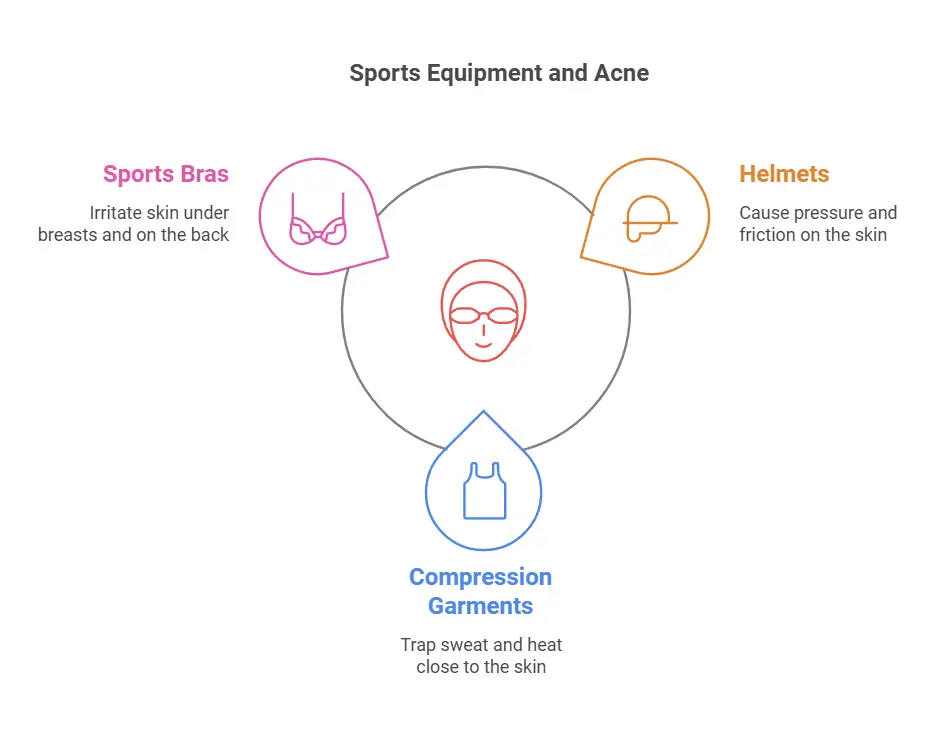
Fabrics and Clothing Choices
Not all fabrics are created equal when it comes to preventing acne. Rough, non-breathable materials can worsen the situation by trapping sweat and increasing friction. On the other hand, breathable and moisture-wicking fabrics are much kinder to your skin.
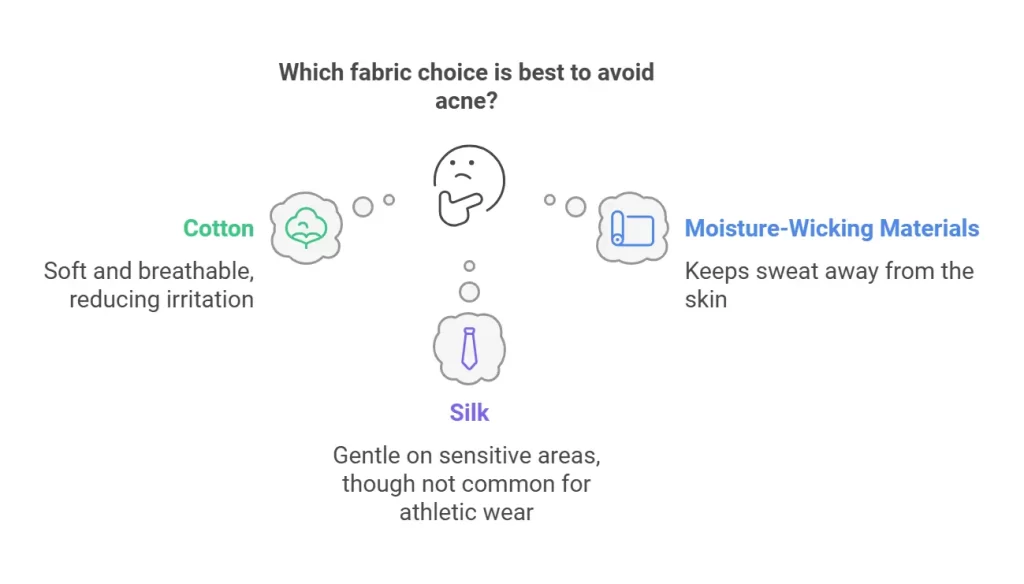
Prolonged Use of Tight Gear
Wearing tight gear for extended periods doesn’t allow the skin to breathe or recover from irritation. This constant pressure and lack of ventilation make it hard for your skin to heal, leading to persistent acne.
Why Does This Matter?
These causes show that acne mechanica isn’t about poor hygiene—it’s about how external factors affect your skin. Understanding these triggers can help you take the right steps to manage and prevent breakouts effectively. By addressing these root causes, you can stop acne mechanica in its tracks!
Prevention of Acne Mechanica
Preventing acne mechanica doesn’t have to be complicated. By adopting a few smart practices, you can reduce irritation, keep your skin clear, and avoid those pesky breakouts. Let’s dive into the strategies you can use to protect your skin!
Prioritize Hygiene Practices
Keeping your skin and gear clean is essential to stop bacteria, oil, and sweat from wreaking havoc. Here’s how to stay fresh:
- Clean Equipment Regularly:
Sports gear, helmets, and straps are magnets for sweat and bacteria. Make it a habit to wash or sanitize them after every use.- Example: Wash your workout gloves, pads, or straps weekly, and wipe down helmets daily.
- Shower Promptly After Exercise:
Sweat left on your skin for too long can clog pores and lead to breakouts. Use a gentle cleanser to remove sweat, dirt, and oil as soon as possible after a workout.- Tip: Use lukewarm water to avoid drying out your skin!
Choose the Right Clothing
What you wear can make a big difference in preventing acne mechanica. Focus on clothing that lets your skin breathe and minimizes friction:
- Wear Loose-Fitting Clothes:
Tight outfits may look sleek, but they trap sweat and create friction. Opt for breathable, loose-fitting garments to keep your skin happy. - Select Breathable Fabrics:
Fabrics like cotton and moisture-wicking materials are excellent choices. They pull sweat away from your skin and allow airflow, reducing moisture buildup.- Tip: Look for athletic wear labelled as “moisture-wicking” or “sweat-resistant.”
- Layering Techniques:
Wear a moisture-absorbing base layer under your sports gear or uniforms to help keep the skin dry.
Stick to a Consistent Skincare Routine
Caring for your skin daily can work wonders in preventing breakouts caused by friction and sweat. Here’s what to do:
- Regular Exfoliation:
Use gentle exfoliating products like salicylic acid or glycolic acid to clear pores and reduce dead skin buildup. Limit exfoliation to 2-3 times a week to avoid over-irritation. - Targeted Treatments:
Apply acne-fighting treatments like benzoyl peroxide or retinoids to breakout-prone areas at night. These can help heal existing acne and prevent future blemishes. - Hydration Matters:
Use non-comedogenic moisturizers to maintain your skin’s barrier and soothe irritation caused by friction. Look for lightweight formulas to avoid clogging pores.
Adjust Your Workout Routine
A few tweaks to your workout habits can go a long way in preventing acne mechanica:
- Take Breaks from Tight Gear:
If possible, give your skin a break from tight equipment or clothing during prolonged exercise sessions. This allows your skin to recover and reduces pressure points. - Change Clothes During Intense Workouts:
After heavy sweating, change into dry clothes to prevent moisture and bacteria from sitting on your skin. For long workout sessions, consider switching clothes every 1-2 hours.
General Best Practices for Sports and Fitness
If you’re an athlete or an active individual, these practices can help you keep acne mechanica at bay:
- Stay Dry:
Keep a towel handy during workouts to pat away sweat. Avoid wiping aggressively, as this can cause further irritation. - Wear Breathable Pads and Straps:
If you use gear with straps or pads, make sure they’re adjustable and don’t fit too tightly. Choose equipment with breathable lining whenever possible. - Shower and Moisturize Post-Workout:
Cleansing your skin promptly after exercise, followed by applying a lightweight moisturizer, helps restore your skin and prevents clogged pores.
By incorporating these prevention strategies into your routine, you can keep acne mechanica from becoming a persistent problem. The key is consistency and being mindful of how friction, sweat, and gear impact your skin. Healthy, clear skin? You’ve got this!
Treatment Options for Acne Mechanica
Dealing with acne mechanica can be frustrating, but the good news is that there are effective treatment options to manage and reduce it. Whether you’re tackling a mild case or dealing with persistent breakouts, there’s a solution for you. Let’s explore the treatment options available.
1. Over-the-Counter Solutions
For mild cases of acne mechanica, over-the-counter (OTC) products are a great starting point. They’re easy to find, affordable, and can help clear up breakouts effectively.
- Salicylic Acid:
This ingredient works wonders by exfoliating dead skin cells and unclogging pores. It’s especially helpful in areas prone to sweat and friction.- How to use: Look for cleansers, toners, or spot treatments with 1-2% salicylic acid. Use them once daily and increase them gradually.
- Benzoyl Peroxide:
A powerful antibacterial agent, benzoyl peroxide targets acne-causing bacteria and reduces inflammation.- How to use: Apply a thin layer of a 2.5-5% benzoyl peroxide cream or gel to the affected area once daily.
- Hydrocortisone Cream:
A mild hydrocortisone cream can help reduce redness and soothe the area for irritated or inflamed skin. - Non-Comedogenic Moisturizers:
Keep your skin hydrated to prevent irritation while using acne treatments. Choose oil-free, lightweight moisturizers.
2. Professional Treatments
If OTC products aren’t cutting it, or if your acne mechanica persists, it may be time to consult a dermatologist. Professional treatments are designed to tackle stubborn cases and provide long-term relief.
- Prescription Medications:
A dermatologist may recommend stronger treatments like:- Topical Retinoids: Help with cell turnover and prevent clogged pores.
- Oral Antibiotics: For severe inflammation, antibiotics can target acne-causing bacteria.
- Hormonal Treatments: In some cases, hormonal imbalances may contribute to acne, and your doctor might prescribe specific medications.
- Specialized Dermatological Procedures:
- Chemical Peels: These help exfoliate the skin deeply, unclog pores, and reduce acne scars.
- Light Therapy: Blue light therapy is used to target bacteria and reduce inflammation.
- Professional Extractions: Dermatologists can safely remove blackheads and whiteheads caused by acne mechanica without risking scarring.
3. When to Seek Professional Help for Acne Mechnanica
A dermatologist can assess your condition and recommend a tailored treatment plan. The sooner you seek help, the faster you can see improvement.
Treating acne mechanica is all about addressing the root causes—friction, pressure, and sweat—while using the right skincare solutions. Start with OTC options if your breakouts are mild, and don’t hesitate to consult a dermatologist for professional care if needed. With the right approach, clear skin is achievable!
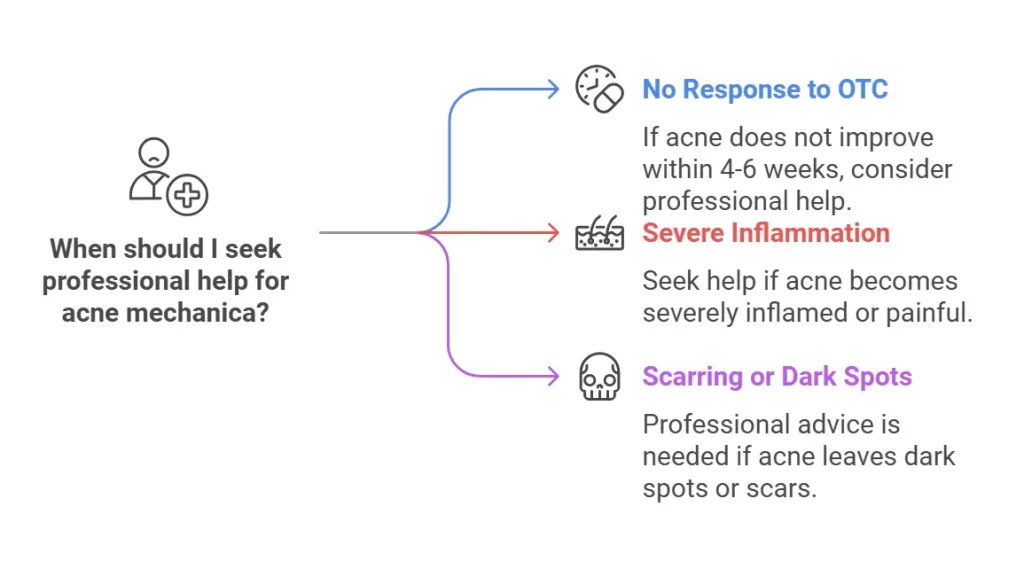
Lifestyle Tips for Managing Acne Mechanica
1. Stay Hydrated
Did you know that drinking enough water can do wonders for your skin? Hydration keeps your skin’s barrier healthy, helps flush out toxins, and prevents dryness that could worsen acne.
- What to do:
- Aim to drink at least 8 glasses of water daily.
- Snack on fruits and veggies with high water content, like cucumbers, watermelon, and oranges. These hydrate and provide vitamins and antioxidants that support skin health.
2. Resist the Urge to Pop Pimples
We’ve all been there—you see a pimple, and the temptation to pop it is overwhelming. But hold on! Picking at acne mechanica can make things much worse.
- Why avoid it?
- Popping pimples increases the risk of scarring and can push bacteria deeper into the skin, worsening the breakout.
- It also prolongs healing time and may lead to post-inflammatory hyperpigmentation.
- What to do instead:
- Use spot treatments like benzoyl peroxide or salicylic acid to dry out the pimple.
- Cover the area with a hydrocolloid patch to protect it from irritation and help with healing.
3. Use Cooling Towels
Cooling towels are a fantastic tool to combat the heat and sweat that often lead to acne mechanica, especially during workouts or intense activities.
- Why It Works:
- Cooling towels absorb sweat and lower skin temperature, reducing irritation caused by heat.
- They help keep your skin drier and cooler, preventing the friction and moisture buildup that clog pores.
- When to Use:
- During exercise or outdoor activities to keep sweat and heat in check.
- Immediately after workouts to soothe the skin and wipe away excess sweat.
Your lifestyle choices have a direct impact on your skin’s health. By staying hydrated, eating nutrient-rich foods, and avoiding harmful habits like pimple-popping, you’re giving your skin the best chance to heal and stay clear. Remember, patience is key when dealing with acne mechanica—stay consistent, and the results will follow!
Natural Remedies for treating Acne Mechanica
- Aloe Vera: Known for its soothing and anti-inflammatory properties, aloe vera gel can help reduce redness and promote healing when applied to affected areas overnight14.
- Tea Tree Oil: This natural antibacterial agent can help kill acne-causing bacteria and reduce inflammation. Dilute with a carrier oil before applying to avoid skin irritation23.
- Apple Cider Vinegar: Its antibacterial properties may help balance skin pH and reduce acne. Mix one part apple cider vinegar with three parts water and apply to the skin13.
- Turmeric: With its anti-inflammatory benefits, turmeric can be made into a paste with yogurt and applied to the skin to reduce acne and improve overall skin health14.
- Castor Oil: Contains ricinoleic acid, which has anti-inflammatory effects that may help reduce acne.
- Green Tea: Rich in antioxidants, applying cooled green tea to the skin can help reduce inflammation and combat bacteria
Conclusion
Acne mechanica may feel like an unavoidable side effect of an active lifestyle, but with the right knowledge and consistent care, you can effectively prevent and treat it. By understanding its causes—like friction, sweat, and tight gear—and making small but impactful changes to your skincare routine, clothing choices, and workout habits, clear skin is within reach.
Prevention is key: prioritize hygiene, choose breathable fabrics, and give your skin time to recover from friction and pressure. For existing breakouts, over-the-counter treatments and natural remedies can work wonders, while persistent cases may benefit from professional dermatological care.
Your skin is your body’s largest organ—it deserves the same attention and care as the rest of you. With patience and the right approach, you can keep acne mechanica at bay and stay focused on what you love most—living an active, healthy life!



